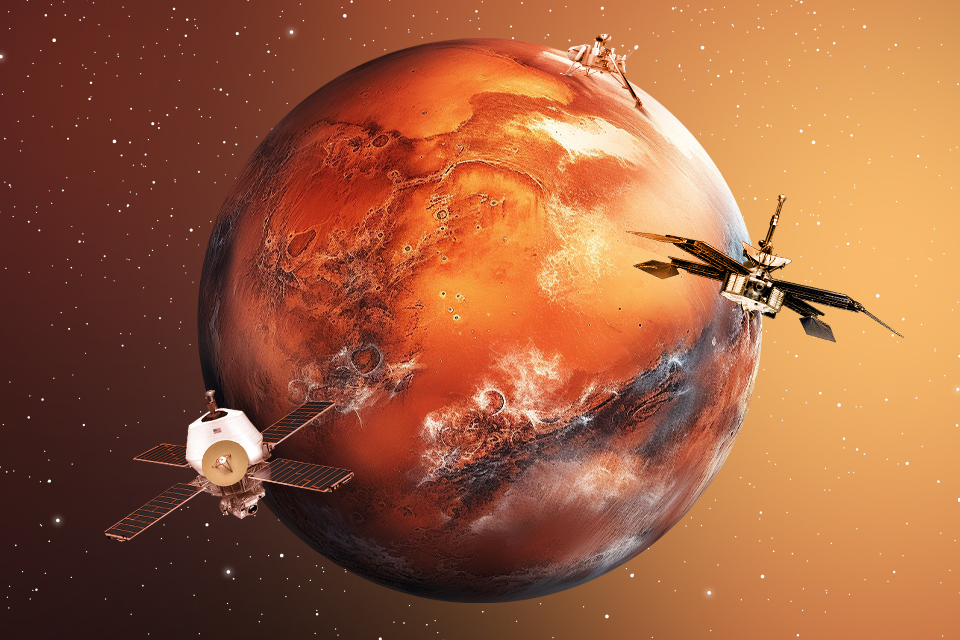At the end of the XIX century, people were sure that they had solid evidence of the existence of intelligent life on Mars. After all, astronomers saw in their telescopes a network of lines that were interpreted as artificial canals. However, already in the early 1970s, astronomers were finally convinced that there was nothing like that there.

1. Who was the first to see the canals on Mars?
In 1877, the world was stirred by the news that the Italian astronomer Giovanni Schiaparelli had observed a network of fine lines on Mars. The public interpreted this news as evidence of the existence of a highly developed civilization on a neighboring planet.
This confidence was based on an erroneous translation of the Italian word “canali”, which Schiaparelli called his discovery. In fact, it means only “straits”, not necessarily of artificial origin, and the astronomer did not report them as man-made structures. In addition, he was not the first to see lines on Mars: back in 1858, this was reported by Angelo Secchi.
2. Did people really see them?
Other astronomers repeatedly looked at Mars after Schiaparelli. They also saw a network of lines there. However, it was not possible to see them properly because they were on the verge of the resolution of telescopes of the late XIX century.
The society of that time fully believed in their reality, although scientists were not sure about it. Back in 1903, an experiment was conducted that proved that by looking at a remote disk with random spots on it, people, thanks to an optical illusion, could see fine lines on it that actually did not exist.
3. Why did people believe in life on Mars?
The main reason for the popularity of the hypothesis of the existence of canals on Mars was that people already knew quite a lot about this planet — for example, that the period of its orbit and the inclination of the axis to the plane of the orbit were similar to Earth’s. Astronomers saw the seasonal increase and decrease of the polar caps and surface details that could be interpreted as seas and oceans. It is not surprising that when the American astronomer Percival Lowell in 1894 supported Schiaparelli’s hypothesis and stated that conditions favorable for life existed on Mars, and a developed civilization existed there, there were no serious arguments against it. The width of the canals was then estimated at 40-160 km.
4. When did people make sure that there were no canals?
Back in 1907, British naturalist Alfred Wallace published a book in which he cited the results of spectroscopic studies of Mars, which showed no signs of water, so the planet should be colder and drier than Lowell thought. In 1909, no canals were found in the images obtained with the help of a large telescope.
For the next few decades, the existence of canals remained extremely doubtful, although people willingly believed in them. In 1965, the American probe Mariner 4 flew past Mars. It photographed the planet and carried out a series of measurements that confirmed that it was unsuitable for life. Finally, the presence of canals was denied by the orbiter Mariner 9, which in 1971 compiled a detailed map of the planet.
5. So are there canals on Mars?
A small part of the canals that were seen on Mars in the XIX century corresponded to faults, mountains, and other very real objects that were difficult to “tie” to natural or, even more so, artificial straits. Most of them really turn out to be an optical illusion, so it’s not worth looking for their modern images.
However, five years after the Mariner 9 mission, in 1976, Viking spacecraft found dry canals on the Red Planet, through which constant streams of water flowed billions of years ago. In the future, these formations were repeatedly photographed by other spacecraft. Therefore, there is no reason to doubt their reality, although they have nothing to do with what Schiaparelli allegedly saw. And in 2022, the Perseverance rover took samples of sedimentary rocks in the place where one of these canals flowed into the ancient Jezero Lake. These samples should arrive on Earth in the next decade.
Follow us on Twitter to get the most interesting space news in time
https://twitter.com/ust_magazine
